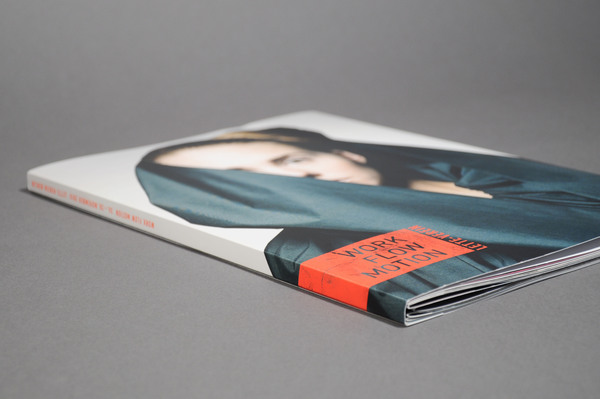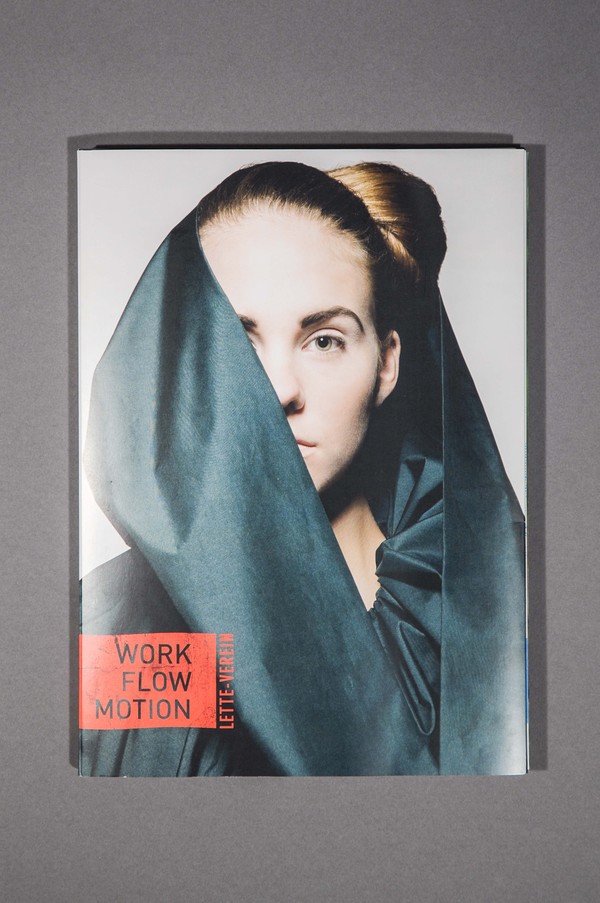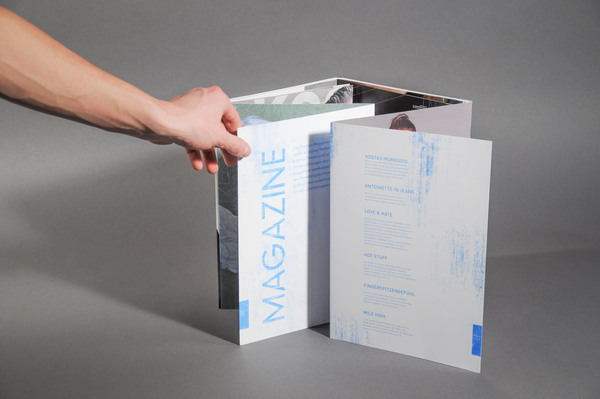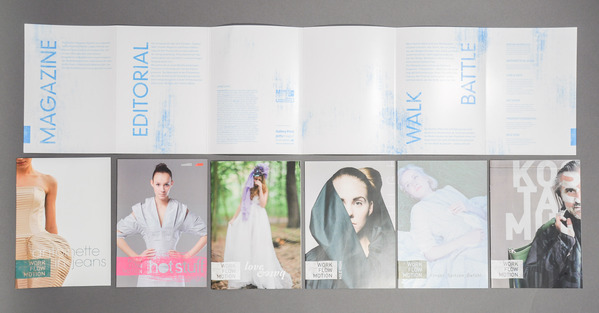MILE HIGH
12 page fashion magazine about fashion design in aviation
12 page fashion magazine about fashion design in aviation
bilingual text
The magazine was part of a collection of six magazines that was put together for the exhibition "work flow motion", that combined the three design compartments of Lette Verein Berlin, photography, fashion design and graphic design.
We chose the history of flight attendant uniform's and their role in fashion design for our magazine, which meant we had to work with found footage that we combined with photography of the most uniform-like looking designs by the fashion design students.
We chose the history of flight attendant uniform's and their role in fashion design for our magazine, which meant we had to work with found footage that we combined with photography of the most uniform-like looking designs by the fashion design students.
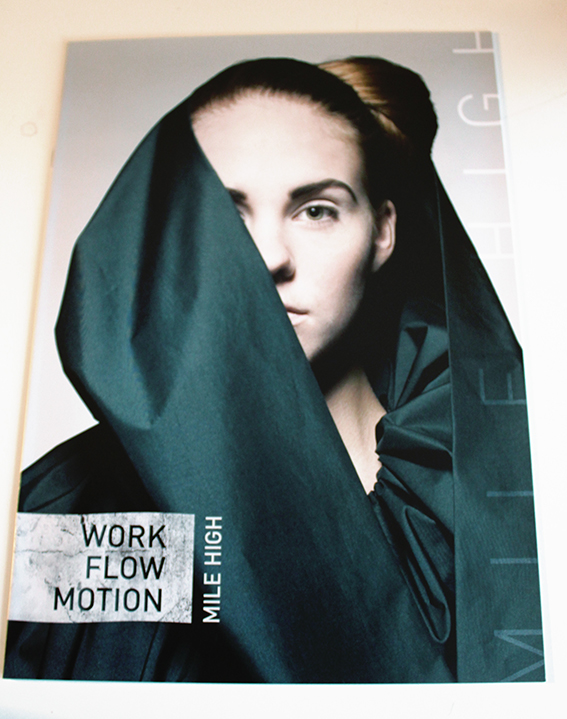
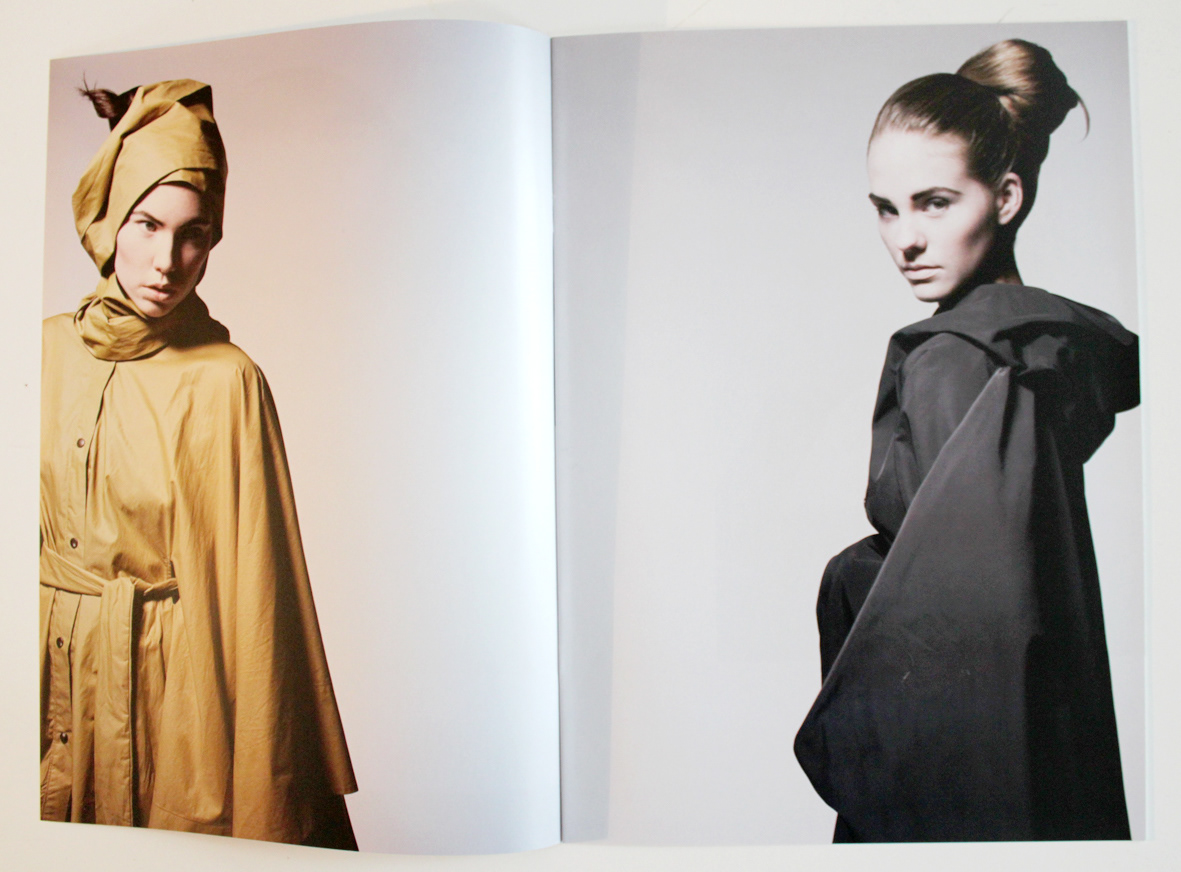

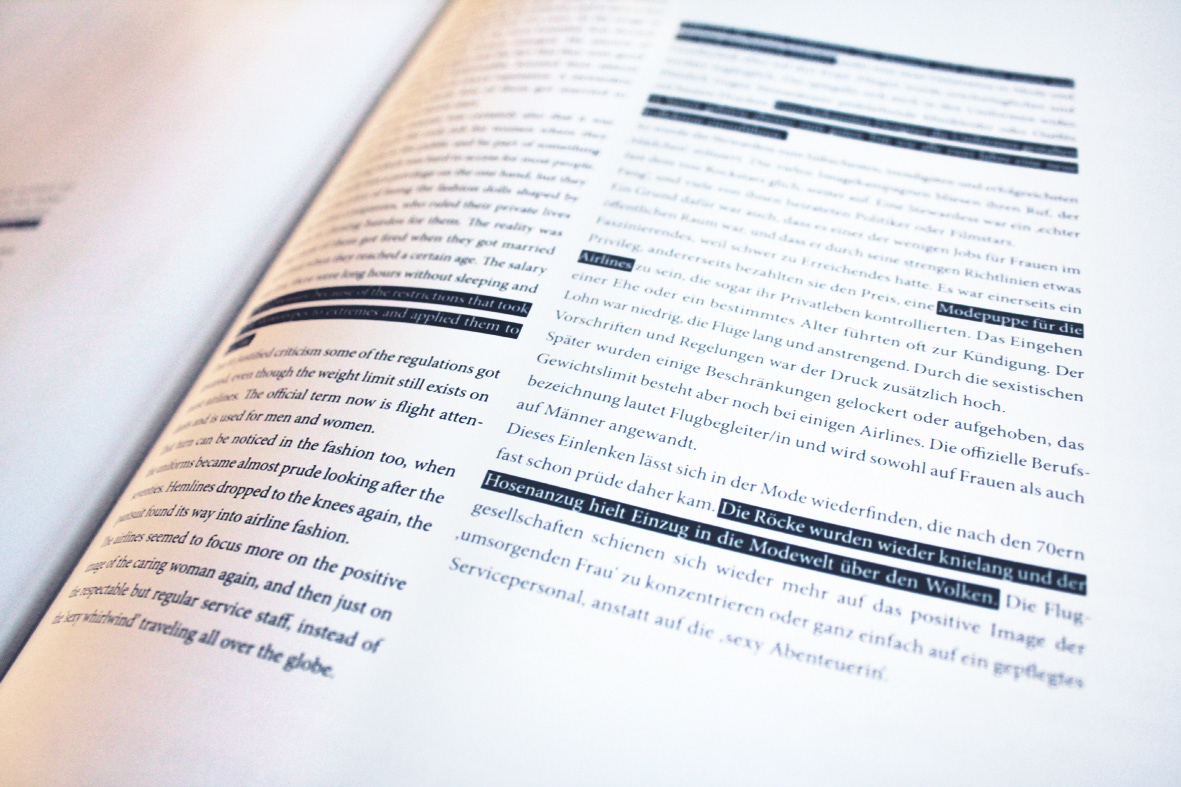
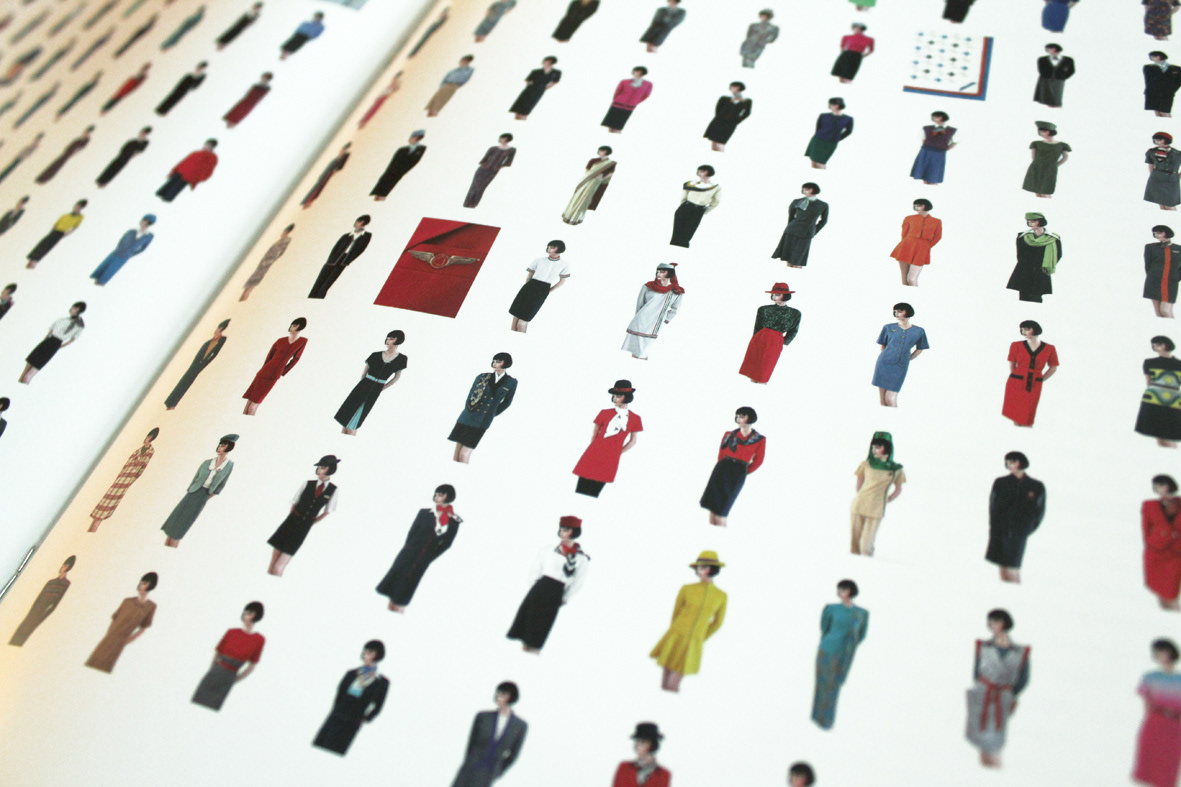
Double-page spread showing flight attendant uniforms from different airlines over the course of time
© Cliff Muskiet, www.uniformfreak.com
design/layout: Nadine Räuber, Clemens Schipper, Sarah von Lüttichau
photography: Sarah Veith
fashion: cover: Antonia Rybacki: ‘Wind- und Regencapes’
page 2 / 3: Fleur Bellanger: ‘Wind- und Regencapes’
Magdalena Beutler: ‘Wind- und Regencapes’
photography: Sarah Veith
fashion: cover: Antonia Rybacki: ‘Wind- und Regencapes’
page 2 / 3: Fleur Bellanger: ‘Wind- und Regencapes’
Magdalena Beutler: ‘Wind- und Regencapes’
"Uniforms have always followed fashion to a certain extend, but even more have uniform designs always had an impact on fashion. An outstanding example for this phenomenon is the design of flight attendant uniforms in the course of time.The image of the stewardess became as important as the Barbie doll, an icon standing for class, fashion and sex.
The original function of flight attendants was security, the first stewardesses were nurses who were supposed to make the passengers feel safer. But soon the airlines got that the stewardesses were the public face of the airlines, they welcomed the passengers on board, and as flying was a privilege of the wealthy, there were more stewardesses for fewer people, and they were used to literally entertain the passengers, chat with them or read books to kids for example. So they became an important part of the airline's corporate identity. Stewardesses could be found in advertisements, each one of them in the distinct uniform of ‘her’ airline, smiling confidently, encouraging youto meet her on board. So the focus changed from safety to service and entertainment. First of all, the applicants had to look good and mustn’t exceed acertain weight limit. They didn’t only have security lessons but also had hairstyle and make-up class along with ‘grace lessons’, where they were taught how to let a man light a cigarette for them. It became the stewardess’ main duty to please the mainly male passengers on their business trips.
The image of the stewardess as the embodiment ofthe perfect woman and sex symbol reinforced during the 60s, when the airlines almost battled each other for the most outstanding corporate identities in their ads and designs, true to the motto ‘Sex sells seats’. While the first uniform designs still had a pinch of a military look, but were very classy, the new generationin the sixties turned everything upside down.
Flying became cheaper, more casual, and that was mirrored in the fashion. Suddenly, stewardesses wore pink scooter mini-dresses, or flared pants with allover prints. It became quite usual to have famous designers design these uniforms, and to have a new collection almost every two years. So the image of the stewardess as the most beautiful, best dressed and successful woman emerged. The amount of image campaigns and the fact that they were good looking and fashionable, boosted their almost magical and rock-starry reputation. A stewardess was a ‘real catch’, lots of them got married to politicians or movie stars.
The original function of flight attendants was security, the first stewardesses were nurses who were supposed to make the passengers feel safer. But soon the airlines got that the stewardesses were the public face of the airlines, they welcomed the passengers on board, and as flying was a privilege of the wealthy, there were more stewardesses for fewer people, and they were used to literally entertain the passengers, chat with them or read books to kids for example. So they became an important part of the airline's corporate identity. Stewardesses could be found in advertisements, each one of them in the distinct uniform of ‘her’ airline, smiling confidently, encouraging youto meet her on board. So the focus changed from safety to service and entertainment. First of all, the applicants had to look good and mustn’t exceed acertain weight limit. They didn’t only have security lessons but also had hairstyle and make-up class along with ‘grace lessons’, where they were taught how to let a man light a cigarette for them. It became the stewardess’ main duty to please the mainly male passengers on their business trips.
The image of the stewardess as the embodiment ofthe perfect woman and sex symbol reinforced during the 60s, when the airlines almost battled each other for the most outstanding corporate identities in their ads and designs, true to the motto ‘Sex sells seats’. While the first uniform designs still had a pinch of a military look, but were very classy, the new generationin the sixties turned everything upside down.
Flying became cheaper, more casual, and that was mirrored in the fashion. Suddenly, stewardesses wore pink scooter mini-dresses, or flared pants with allover prints. It became quite usual to have famous designers design these uniforms, and to have a new collection almost every two years. So the image of the stewardess as the most beautiful, best dressed and successful woman emerged. The amount of image campaigns and the fact that they were good looking and fashionable, boosted their almost magical and rock-starry reputation. A stewardess was a ‘real catch’, lots of them got married to politicians or movie stars.
One of the reasons was certainly also that it was pretty much the only job for women where they could work in the public and be part of something fascinating which was hard to access for most people. So it really was a privilege on the one hand, but they paid the price of being the fashion dolls shaped by the airline companies, who ruled their private lives down to chosing hairdos for them. The reality was that most of them got fired when they got married or at least when they reached a certain age. The salary was low, there were long hours without sleeping and a lot of pressure because of the restrictions that took sexist stereotypes to extremes and applied them to real life with all the restrictions. Due to justified criticism some of the regulations got lowered over the years, even though the weight limit still exists on most airlines. The official term is now "flight attendant" and is used for men and women.
That turn can be noticed in the fashion too, when the uniforms became almost prude looking after the seventies. Hemlines dropped to the knees again, the pant suit found its way into airline fashion.The airlines seemed to focus more on the positive image of the caring woman again, and then just on the respectable but regular service staff, instead of the ‘sexy whirlwind’ traveling all over the globe."
